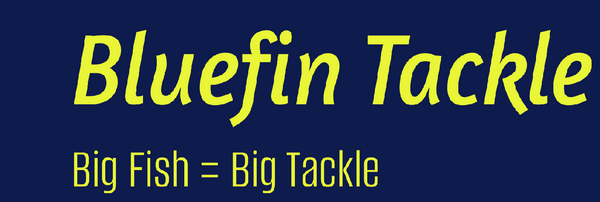
How to Tie Braided Fishing Line to a Fishing Reel
Share
How to Tie Braided Fishing Line to a Fishing Reel
Fishing enthusiasts know that using braided fishing line can offer numerous advantages, including increased strength, durability, and sensitivity. However, properly securing braided fishing line to a reel is crucial to ensure optimal performance and to prevent slippage. This guide provides a comprehensive, step-by-step process for tying braided fishing line to a fishing reel, along with essential tips to enhance your fishing experience.
Understanding Braided Fishing Line
Braided fishing lines are composed of multiple strands of synthetic fibers woven together. This unique construction provides exceptional tensile strength and minimal stretch, allowing anglers to detect even the subtlest bites. However, the slick and smooth surface of braided lines can make it challenging to secure them to a reel without the correct technique.
Why Proper Knot Tying Is Important
Improperly securing braided line to a reel can lead to line slippage, inconsistent drag performance, and reduced casting distance. A secure knot ensures that the line remains firmly in place during casts and retrieves, enhancing both accuracy and control. It also prevents the frustration of losing a catch due to line failure at the reel.
Tools and Materials Needed
Before you begin, gather the following tools and materials:
- Braided fishing line
- Fishing reel (spinning or baitcasting)
- Scissors or line cutters
- Electrical tape (optional, for added grip)
Step-by-Step Guide to Tying Braided Fishing Line to a Reel
Step 1: Prepare the Reel
Start by ensuring your reel is clean and free from any old line remnants. Open the bail if using a spinning reel or disengage the spool if using a baitcasting reel. This will allow you to access the spool surface where the line will be secured.
Step 2: Attach Backing (Optional but Recommended)
Because of its slick nature, braided line can slip on the spool if wound directly. Adding a monofilament or fluorocarbon backing provides friction and prevents slippage. To add backing:
- Attach the monofilament or fluorocarbon line to the spool with an arbor knot.
- Wind approximately 10-15 yards of backing onto the spool.
Step 3: Tie the Arbor Knot with Braided Line
If you choose to skip the backing, the arbor knot is the most effective way to attach the braided line directly to the spool. Here is how to tie it:
- Wrap the braided line around the spool, leaving a 12-inch tag end.
- Tie an overhand knot around the mainline, creating a loop around the spool.
- Tie a second overhand knot near the end of the tag line to act as a stopper.
- Pull the mainline to snug the first knot against the spool.
- Trim any excess tag end with scissors.
Step 4: Secure with Tape (Optional)
If you are using only braided line without backing, apply a strip of electrical tape over the arbor knot. This provides additional grip and minimizes slippage, especially when handling large fish.
Step 5: Spool the Line
- Hold the spool of braided line and ensure it unwinds counterclockwise for spinning reels or in the direction of the reel's rotation for baitcasting reels.
- Apply gentle tension on the line while turning the reel handle.
- Wind the braided line evenly across the spool, maintaining consistent pressure to prevent loose wraps.
Step 6: Fill the Spool Correctly
Avoid overfilling the spool, as this can cause tangling and casting issues. Leave approximately 1/8 inch of space between the line and the spool lip for optimal performance.
Alternative Knot: The Uni Knot
The uni knot is another reliable knot for attaching braided line to a reel, particularly when paired with backing. Here is how to tie it:
- Pass the braided line around the spool, leaving a 12-inch tag end.
- Form a loop by doubling back the tag end.
- Wrap the tag end around both lines and through the loop 6-8 times.
- Pull the mainline to tighten the wraps and slide the knot against the spool.
- Trim the tag end close to the knot.
Common Mistakes to Avoid
- Skipping the Backing: Braided line can slip without a monofilament or fluorocarbon base.
- Inadequate Tension: Loose wraps during spooling cause uneven line lay and tangling.
- Overfilling the Spool: This leads to wind knots and reduced casting accuracy.
- Neglecting to Check Knots: Always inspect and test the knot before casting to ensure a secure hold.
Maintenance Tips for Braided Line
- Check for Wear: Inspect the line regularly for frays and weak spots.
- Rinse After Use: Saltwater can degrade braided line; rinse your reel with fresh water after fishing.
- Store Properly: Keep reels in a cool, dry place to prevent line degradation.
Conclusion
Properly tying braided fishing line to a reel is an essential skill for any angler. Using the arbor or uni knot, combined with the optional addition of backing and tape, ensures a secure and reliable connection. By following these steps and maintaining your gear, you will enhance your fishing efficiency, reduce line-related issues, and increase your chances of landing that trophy fish. With practice, these techniques will become second nature, allowing you to focus on the thrill of the catch.
